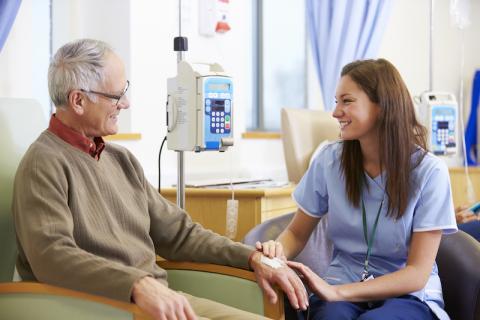
The likelihood of someone being vaccinated against COVID-19 varies substantially according to their profession, according to research published by the Office for National Statistics. Rates were found to be lower in jobs that cannot be done from home, as well as in those involving contact with the public or with vulnerable people.
Monitoring differences in vaccination uptake in different groups is crucial to help inform the policy response to the pandemic. Some occupations may be disproportionately represented among the unvaccinated (around 14% of the UK population), and targeted measures may help to encourage particular groups to protect themselves against COVID-19.
This new study, published as a preprint (and therefore not yet peer-reviewed) saw researchers examine records for over 14 million people aged 40 to 64. As well as looking at whether or not people were fully vaccinated against COVID-19, the researchers took into account a range of factors which are known to be associated with vaccine uptake, such as sex, age, region, ethnicity and education.
They found significant differences in vaccination rates according to people’s line of work, with rates being higher in administrative and secretarial occupations (90.8%), professional occupations (90.7%), and among managers, directors and senior officials (90.6%). Rates were lowest (83.1%) in people working in ‘elementary occupations’ (see below).
Vaccination rates were also higher in people with jobs that could be done from home. Many occupations with low vaccination rates involved contact with the public or with vulnerable people. There is evidence that people working in these kinds of jobs are at greater risk of COVID-19 infection and death.
Vaccination rates were found to be highest in the following roles:
- Senior police officers (95.5%)
- School secretaries (94.8%)
- Senior officers in fire, ambulance and prison and related services (94.6 %)
- Police officers (94.4%)
Some of the professions with lowest vaccination rates were:
- Packers, bottlers, canners and fillers (77.1%)
- Professionals such as acupuncturists, chiropractors and osteopaths (77.2%)
- Fitness instructors (77.8%)
- Vehicle valeters and cleaners (78.6%)
- Elementary construction occupations (78.7%)
- Waiters and waitresses (78.9%)
Some of the most common occupations (ie with more than 100,000 workers) with vaccination rates below 90% were:
- Chefs (82.6%)
- Cleaners and domestics (82.7%)
- Taxi and cab drivers (83.3%)
- Kitchen and catering assistants (85.2%)
- Care workers and home carers (85.8%)
- Sales and retail assistants (86.4%)
Commenting on their findings, the research team said:
Increasing vaccination coverage in occupations with low vaccination rates is crucial to help protecting the public and control infection, especially in occupations that cannot be done from home and involve contacts with the public. Policies such as ‘work from home if you can’ may only have limited future impact on hospitalisations and deaths.
Further data released by the ONS on 15 November showed vaccination rates to be lower than average in the following groups:
- People that had been previously infected with COVID-19
- Non-white minority ethnic groups
- People who are not currently working
- People working in hospitality, personal services or transport
- People living in deprived areas
